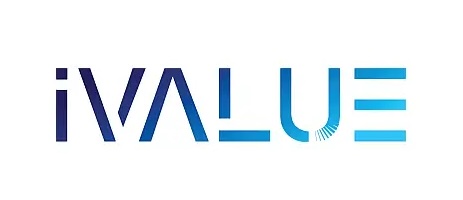Listed IPO - Recently Closed IPO

Offer Date: Sep 24, 2025 - Sep 26, 2025

Offer Date: Sep 24, 2025 - Sep 26, 2025

Offer Date: Sep 24, 2025 - Sep 26, 2025

Offer Date: Sep 23, 2025 - Sep 25, 2025

Offer Date: Sep 23, 2025 - Sep 25, 2025

Offer Date: Sep 23, 2025 - Sep 25, 2025

Offer Date: Sep 23, 2025 - Sep 25, 2025

Offer Date: Sep 22, 2025 - Sep 24, 2025

Offer Date: Sep 22, 2025 - Sep 24, 2025

Offer Date: Sep 19, 2025 - Sep 23, 2025

Offer Date: Sep 19, 2025 - Sep 23, 2025

Offer Date: Sep 18, 2025 - Sep 22, 2025

Offer Date: Sep 17, 2025 - Sep 19, 2025

Offer Date: Sep 16, 2025 - Sep 18, 2025

Offer Date: Sep 10, 2025 - Sep 12, 2025
What is Recently Listed IPO?
A recently listed IPO is a company that has just completed being publicly listed and can now be found trading on stock markets including NSE (National Stock Exchange) or BSE (Bombay Stock Exchange). Everybody can trade shares in these companies after they carried out an Initial Public Offering (IPO).
Key Definition
An IPO transforms a private company into a publicly-traded entity, allowing retail and institutional investors to buy and sell shares on recognized stock exchanges.
Why Investors Track New Listings
Both retail and institutional investors closely track these listings for several strategic reasons:
Price Volatility
Prices for new listings usually fluctuate in the short term, creating trading opportunities.
First Day Gains
On the first day after listing, it's possible to record significant gains.
Market Sentiment
They indicate market sentiment and appetite for new equities.
Step-by-Step IPO Listing Process
Important events happen on the IPO listing day. Here's what occurs:
Trading Begins
Shares become available for trading with a unique ticker symbol
Price Discovery
Opening prices set based on investor demand
Investor Decisions
Allotted investors can hold or sell shares
Public Trading
Shares become liquid for public trading
Public Ownership
Company becomes subject to regulations and analyst reviews
How is IPO Listing Price Determined?
On the day an IPO is listed, its price is determined through the price discovery process:
- Market Reception Analysis: How well shares are received by financial institutions and retail investors
- Pre-market Call Auction: Buy and sell orders are matched through exchange mechanisms
- Supply & Demand Balance: Final listing price based on market dynamics
- Price Variation: May differ from IPO price, leading to gains or losses
- Grey Market Premium (GMP): Important indicator of potential stock performance
IPO Evaluation Methods
Evaluating a recently listed IPO requires comprehensive analysis combining multiple approaches:
Fundamental Analysis
- Financial Review: Revenue, net profit, margins, debt levels
- Business Model: Scalability, uniqueness, competitive advantage
- Sector Growth: High-potential sectors (EV, fintech, healthcare)
- Promoter Credibility: Track record and governance quality
Post-Listing Analysis
- Price Movement: First week trading patterns
- Volume Analysis: Large investor entry/exit patterns
- Analyst Coverage: Brokerage recommendations and ratings
- Quarterly Performance: Earnings and institutional holdings
Signs of Successful IPO Performance
When an IPO is successful, it typically shows these key indicators in the first few weeks:
Premium Listing
Shares list above issue price, indicating investor optimism
High Trading Volume
Strong trading volumes show continued investor interest
Price Stability
Stable or rising prices reflect market confidence
Positive Analyst Coverage
Brokerages initiate "Buy" or "Overweight" recommendations
Institutional Buying
Mutual funds and FIIs become active buyers
IPO Performance Tracking
To evaluate IPO performance effectively, use these comprehensive tracking methods:
Performance Dashboard Metrics
Listing Performance
Track listing vs issue price
Daily Trends
Daily & weekly performance
Volume Analysis
Trading volume patterns
Sector Comparison
Compare with peers
1 Week Tracking
Short-term performance
15-30 Day Analysis
Medium-term trends
Additional Key Metrics
- GMP Movement: Grey Market Premium trends and analysis
- Subscription Data: Category-wise subscription rates (Retail, QIB, NII)
- Institutional Holdings: Post-listing FII and DII investment patterns
- Market Cap Ranking: Position within sector and overall market
About Listed IPOs
The IPOs which get listed on exchanges (BSE, NSE) are called listed IPOs and are open for trade to all kinds of investors, irrespective of allotments. An IPO is generally open for accepting applications for 3 working days. Once it gets listed on the exchanges, it comes under the category of a listed IPO.
Once the allotment of a respective IPO is out, you can easily check it on IPO Ji website / App.
Steps to check allotment on website:
Click on the allotment tab on the title bar.
Login to your account.
Select the IPO from the drop-down list.
Add Account / Click on "Check Allotment" if accounts are already added.
The status of your application will be visible beside the respective account.
Steps to check allotment on App:
Tap on the allotment icon in the bottom bar of the IPO Ji App.
Login to your account.
Select the IPO from the drop-down list.
Add Account / Click on "Check Allotment" if accounts are already added.
The status of your application will be visible beside the respective account.
Note: You can check the allotment status of your application on IPO Ji even if you haven't applied for the IPO through IPO Ji.
An IPO refund is the money that an investor gets back if their application for shares in an IPO is not successful, either partially or completely. If you don't get a full allotment or if your application is rejected, then the extra money you have paid or the entire amount invested is returned to your bank account.
FAQs
Ans. Once the IPO is closed for subscription, investors must wait for allotment. If allotted, the shares are transferred to the respective Demat accounts. In case of non-allotment, a refund is initiated, and the amount is returned to the bank account.
Ans. You can check your allotment status on the IPO Ji website or app to see whether your application was successful or not.
Ans. If an IPO is not fully subscribed, the underwriter may lower the price band to attract investors. However, if it is still less than 90% subscribed on the closing day, the company will return the amount to all subscribers.
Ans. On the day of listing, log in to your Trading Account, select the stock from your holdings that you want to sell, choose the quantity, and sell the shares. IPO listings often bring profits for investors.
Ans. Based on the past 4 years of data, a significant number of IPOs have been profitable. However, stocks can be listed at a discounted price depending on the company’s financial records and market conditions.
Ans. You can sell IPO shares fully or partially on the listing day itself. However, some investors prefer holding the shares for a longer duration if they believe in the company and its financials.
Ans. There is no definite way to predict IPO performance on the listing day as various uncertain conditions can affect it. However, the Grey Market Premium (GMP) of an IPO can provide a brief idea about its potential performance.
Disclaimer: The GMP is a speculative indicator and should not be considered as a guaranteed measure of IPO performance. Always perform your own research or consult with a financial advisor before making investment decisions.
